So you’re curious about landrace strains, huh? Well, you’ve come to the right place. In the simplest terms, landrace strains are like the OGs of the cannabis world. They’re the pure, native cannabis plants that have grown in the wild across the globe for thousands of years, way before we started tinkering around with breeding them. These strains adapted to their own specific environment, making them unique in flavor, effects, and growth characteristics.
Now, why do these old-school strains matter in today’s high-tech cannabis culture? Well, it’s like keeping a piece of history alive. Landrace strains are the foundation of all the hybrid strains we enjoy today, and breeders explore these genetics when they want to bring something new to the table or enhance traits like potency, flavor, or resilience to pests and diseases.
In this blog, we’ll explore everything there is to know about original landrace strains. We’ll explore their fascinating origins, why they’re crucial for breeding new strains, and how they’ve stamped their mark on the global cannabis culture. Plus, we’ll sneak a peek at some of the most legendary landrace strains that every cannabis aficionado should know about. Let’s begin!
The Origins of Landrace Strains
Digging a bit into the backstory of these landrace strains is like taking a trip back in time. These strains didn’t land up as they are by accident; their history is as rich and diverse as the regions they come from.
Now, because these strains were geographically isolated – think mountains in Afghanistan or valleys in Jamaica – they had to get by on their own, developing unique characteristics to survive and thrive. This natural selection process led to the pure strains we know today.
Landrace strains are a snapshot of cannabis’s evolutionary path before humans started breeding programs. What’s cool is that each landrace strain carries with it the essence of its native environment, from the type of high it produces to its aroma and taste.
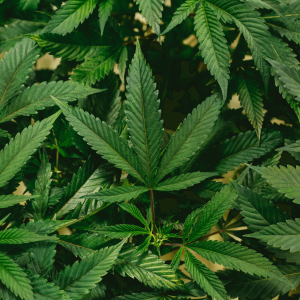
Characteristics of Landrace Strains
Now that we’ve covered where these landrace strains originated, you might be wondering – what sets them apart from the rest?
Firstly, these strains are the epitome of genetic purity and stability. They have remained isolated in their own parts of the world for centuries, avoiding crossbreeding with other varieties. This isolation has resulted in a very consistent genetic makeup.
Landrace strains vary, but they share some characteristics. They typically look robust and hearty, a result of adapting to their local environments over years. They may not look as polished or sophisticated as today’s hybrid strains, but they possess a rugged, natural beauty.
When it comes to effects, it really centers on their origin. For example, a sativa-dominant strain from Africa may leave you feeling energized and creative, whereas an indica landrace strain from India’s mountains might help you relax deeply. Moreover, each landrace strain has a distinct flavor and aroma that reflects its unique heritage.
Key Examples of Landrace Strains
Now that we understand what landrace strains are and their importance as the ancestors of today’s cannabis strains, let’s look at some well-known examples.
Sativa Strains from Africa and Asia
First, let’s talk about sativa strains, which act like a strong cup of coffee for your system. Have you heard of Durban Poison? It’s a well-known strain from South Africa with a sweet, earthy flavor that boosts your energy and creativity.
Another one is Thai Stick, originating from Thailand. It’s famous for its strong cerebral effects, which can help you reach a meditative state. Essentially, these strains are like your morning coffee, but for your soul.
Indica Strains from the Hindu Kush Region
Shifting to a more relaxing part of the spectrum, we’re looking at indicas from the Hindu Kush region, specifically Afghan Kush. This legendary strain originates from the mountains between Afghanistan and Pakistan and is known for its relaxing effects. It’s like being enveloped in a warm, comforting blanket, offering a calm and peaceful atmosphere. Afghan Kush is one of our go-to’s for unwinding in the evening after a busy day.
Each of these strains brings something unique to the table – or the pipe, rather. They’re not just important for their historical significance; they’re a testament to cannabis’s natural diversity and its ability to adapt and thrive in different corners of the globe.
Whether you’re into the energizing kick of a potent sativa or the mellow relaxation of a classic indica, these landrace strains offer a pure, unadulterated experience that’s hard to beat.
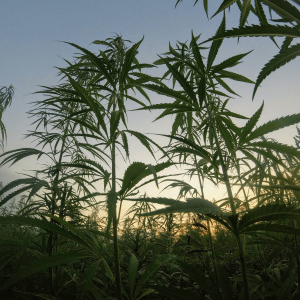
The Journey from Landrace to Hybrid
After exploring the origins of landrace strains, let’s discuss how we transitioned from the pure, original strains to the wide array of hybrid strains available today. It’s similar to moving from a classic vinyl collection to a custom Spotify playlist – both are great but offer different experiences.
Cross-breeding for specific traits has been the game changer in the cannabis kingdom. Imagine wanting a plant that can handle chilly weather better or one that doesn’t make you feel like you’re bouncing off the walls. That’s where the magic of science and a bit of patience comes into play. Cannabis breeders select parent strains for their desirable traits, such as resilience, flavor, or the type of high they produce, and combine them to create something new and potentially better.
This hybridization process has massively impacted the diversity and potency of the strains available today. But, it’s not just about having more options on the menu; these hybrids can pack a more potent punch or offer a more balanced experience, depending on what experience you’re craving.
The transition from landrace to hybrid strains illustrates human curiosity and creativity, offering consumers a broader variety of choices. It highlights the merging of tradition and innovation in the search for the perfect bud.
The Role of Landrace Strains in Modern Breeding
Diving into the DNA of today’s cannabis scene, it’s clear that landrace strains are more than just a nod to the past—they’re the backbone of countless hybrids. Their pure genetics offer a goldmine for breeders looking to introduce or enhance specific traits, like a smoother high, a tangy taste, or even a resistance to certain pests.
For the green thumbs out there cross-breeding strains, landrace genetics are like a secret ingredient in the recipe for creating the next big hit. Want a strain that’s resilient against mold or thrives in cooler climates? There’s likely a landrace for that.
And when it comes to the medical and recreational fields, these OG strains bring a lot to the table. Their distinct effects and flavors have influenced the creation of hybrids tailored to treat specific medical conditions or match the vibe of your next smoke circle.
These ancient cannabis genetics are more than just parts of cannabis history; they’re crucial in shaping the future of cannabis culture and innovation. Whether you’re looking for medical relief or recreational enjoyment, the impact of landrace strains is fundamental to your experience.
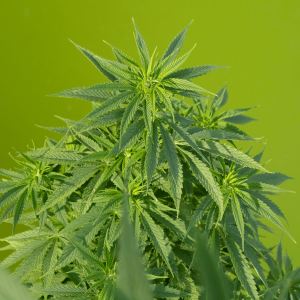
Preserving Landrace Strains
Now let’s talk about preserving landrace cannabis strains, which are crucial to the plant’s history, unique characteristics, and overall genetic makeup. In a cannabis world focused on breeding new hybrids, keeping these original strains pure is challenging but important.
Seedbanks and cannabis conservationists play a key role in this effort. They’re like the collectors who ensure classic records aren’t forgotten, working hard to preserve landrace cannabis seeds for research and future breeding, all while trying to maintain their genetic purity amidst widespread crossbreeding.
Preserving these strains matters because they’re the foundation of all cannabis varieties we have today. Losing them would mean losing essential chapters of cannabis history.
It’s also about respecting cannabis’s natural evolution and ensuring a diverse genetic pool for future generations. For those interested in experiencing cannabis in its most original form, the efforts to preserve these strains are incredibly valuable.
Cultivation Challenges and Solutions
Landrace strains require more TLC and an understanding of their natural habitat, while hybrids are often bred to be more forgiving to the novice grower. Let’s take a look at some successful cultivation tips:
Tips for Successful Cultivation
- Understand Your Strain’s Origin: Knowing whether your landrace strain comes from the mountains of Afghanistan or the tropical climates of Thailand can help you recreate similar conditions in your growing space.
- Adjust Lighting Accordingly: Sun-loving sativas from Africa might need more light compared to indica landraces from the Hindu Kush mountain range.
- Be Patient: Landrace strains might not be as quick to flower as some hybrids. Giving them the time they need will reward you with purer, more potent buds.
- Control the Environment: If you’re growing indoors, pay extra attention to humidity and temperature. These conditions can make or break a landrace
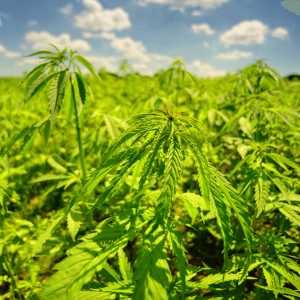
The Future of Landrace Strains
Biotechnological advancements are transforming cannabis cultivation, particularly for landrace strains, offering new possibilities similar to how technology has revolutionized music and food delivery. This level of technology aims to improve accessibility and possibly uncover new discoveries.
Thanks to advances in genetics, scientists and growers can now explore growing landrace strains in unexpected places, like cultivating Afghan Kush in an urban setting. This effort goes beyond preservation; it’s about reintroducing these ancient strains into the modern world.
Exploring the genetic details of these strains could lead to new benefits, such as a variety specifically designed to reduce anxiety without side effects or a plant-based option for chronic pain that hasn’t been considered before.
By merging traditional strains with modern biotechnology, the potential uses and benefits of landrace cannabis strains are vast, opening up opportunities for medical use, recreational enjoyment, or preserving natural history. Needless to say, the future for these strains is promising.
Landrace Strains and Medical Research
Landrace cannabis strains are key players in the world of plant-based medicine, often overlooked despite their importance. These strains have unique cannabinoid profiles because they haven’t been modified by extensive breeding, making them incredibly valuable for research. They serve as untouched examples of cannabis genetics, allowing scientists to explore how different environments affect a plant’s growth and its potential health benefits.
These original strains are crucial for understanding how plant-based medicine works. By studying them, researchers can pinpoint specific cannabinoids that may be more effective for certain health conditions, and do so without the side effects associated with synthetic drugs. Essentially, they offer a natural blueprint for creating more effective, natural treatments.
Moreover, the genetic diversity of landrace strains aids in creating new hybrids aimed at specific health issues. Whether it’s a strain for chronic pain that doesn’t cause drowsiness or one for anxiety that allows you to stay focused, landrace strains are leading the way in this area of medical research.
Landrace Strains Around the World
Exploring landrace strains is like traveling the world from your couch. They tell stories of their origins, from the misty mountains of the Hindu Kush to the sunny plains of Africa. Each area’s unique climate, culture, and traditions give these strains a distinct character.
Regional Differences and Legal Status
The legal status of these ancient strains varies as much as their flavors. In some places, you’re totally cool to grow and share them, while in others, it’s a no-go zone. This patchwork of laws adds another layer to the challenge of preserving these strains, but also makes the pursuit quite thrilling.
Cultural Significance and Traditional Uses
Each landrace strain carries with it a piece of its homeland’s history and culture. Whether it’s used in spiritual ceremonies in Asia or as traditional medicine in Africa, these strains have more roles in their native lands than just kicking back and relaxing. Understanding these roles not only gives us a peek into their cultural significance but also highlights how integral they are to traditional practices and beliefs.
It’s a wild, wide world of landrace strains out there, full of stories and secrets waiting to be discovered. And hey, exploring them is a way to pay homage to the rich tapestry of cannabis culture that spans the globe.
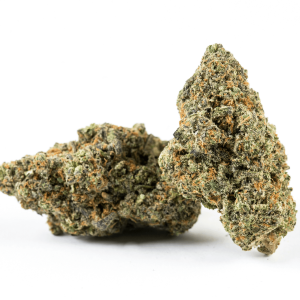
Wrapping It Up
Alright, so here’s the scoop on landrace strains: they’re not just any old cannabis plants; they’re the OGs, the original genetics that all your modern favorites traced back to. Preserving them is like keeping a piece of history alive, and it’s crucial for keeping the cannabis gene pool as diverse and robust as possible.
Looking ahead, the future of these ancient cannabis strains appears very promising. With advances in technology and science, the goal is not only to prevent these strains from disappearing but also to potentially transform how we view and use cannabis. This includes developing innovative medical treatments and achieving the ideal relaxation experience without undesirable side effects.
In the world of cannabis culture, landrace strains are crucial, linking the past, present, and future. They highlight the plant’s long history and point towards its potential. Preserving these strains honors tradition and paves the way for a future where cannabis can continue to surprise, heal, and bring happiness in new ways.
Frequently Asked Questions
1. What is a landrace strain?
A landrace strain is essentially the ancestor of cannabis plants. It is a variety that has grown in its natural habitat for thousands of years, without any crossbreeding with other strains. In simple terms, it’s cannabis in its most natural state, not altered by humans in terms of breeding.
2. How many landrace strains are left?
Counting the exact number of landrace strains is a bit like trying to pin down how many songs exist in the world—it’s complex. But, the consensus is that there are dozens out there, each unique to its own part of the globe. The exact number keeps changing as some are discovered and, unfortunately, as others might be lost.
3. Are there any North American landrace strains?
North America is relatively new to cannabis landrace strains because the plant isn’t native to this region. We mostly grow hybrids that originated from landrace strains from other continents. Despite this, some strains have adapted to the North American climate over centuries, leading to what could be considered “heirloom” strains.

4. What is indica vs sativa landrace?
In simple terms, landrace indica strains are known for their relaxing effects and are usually found in harsh, dry climates such as Afghanistan. On the other hand, a pure sativa landrace strain is more energizing. Landrace sativa strains originate from warmer, tropical climates like Thailand. Both types are pure, offering an experience that connects you to ancient traditions.

 Rewards
Rewards





